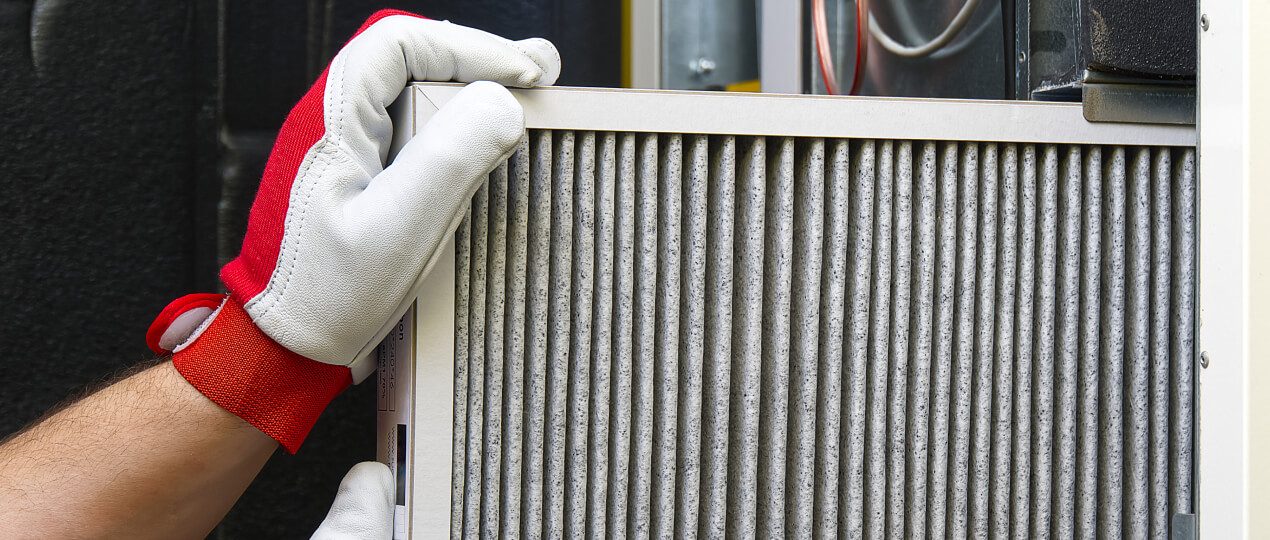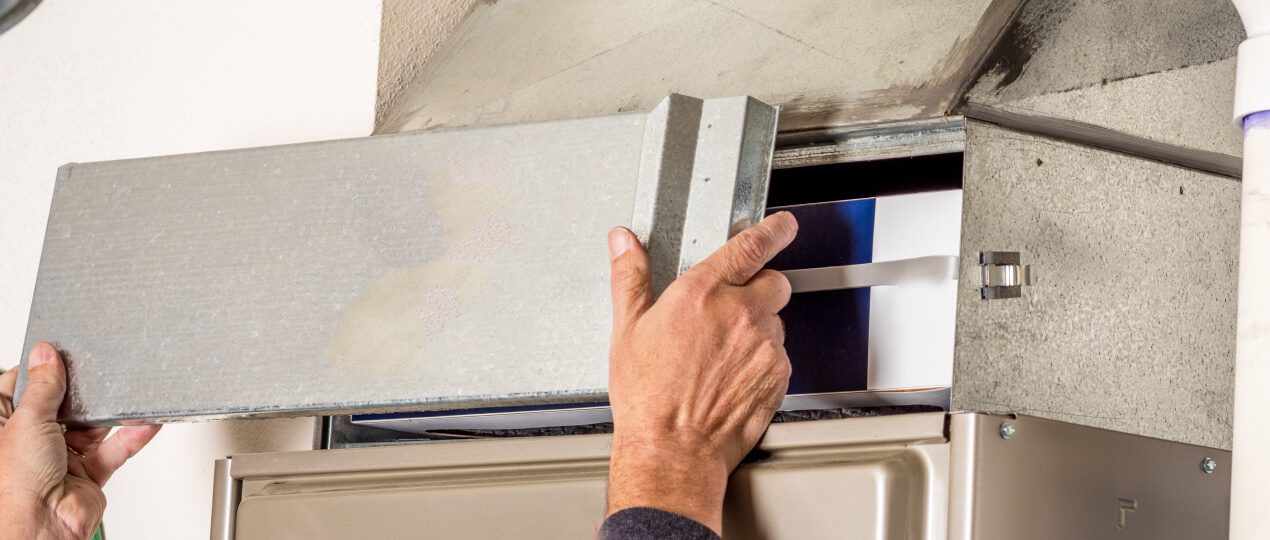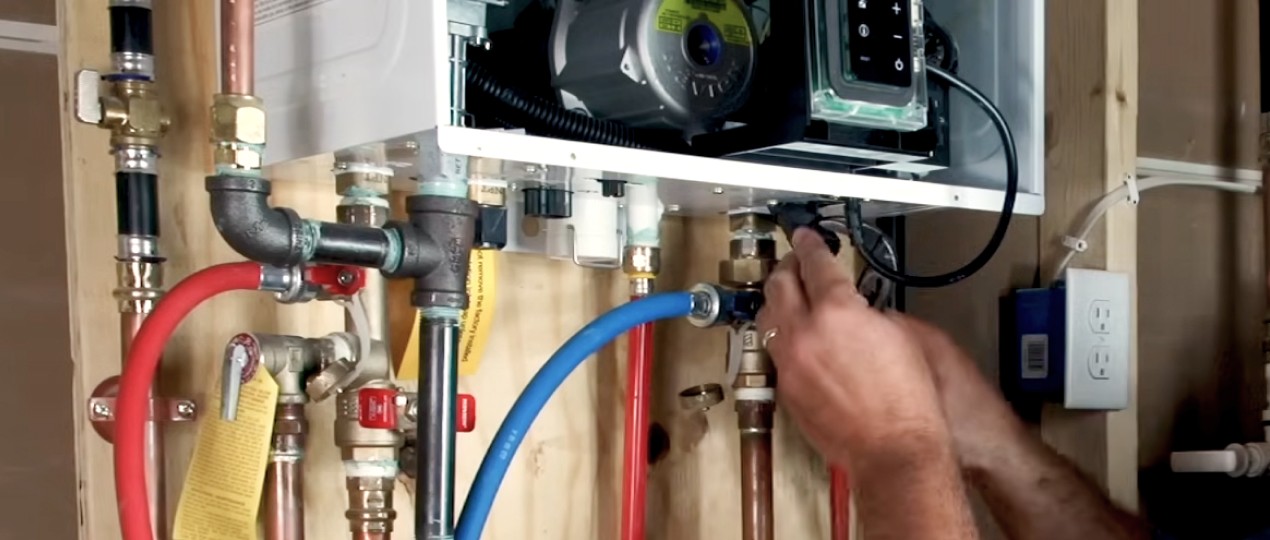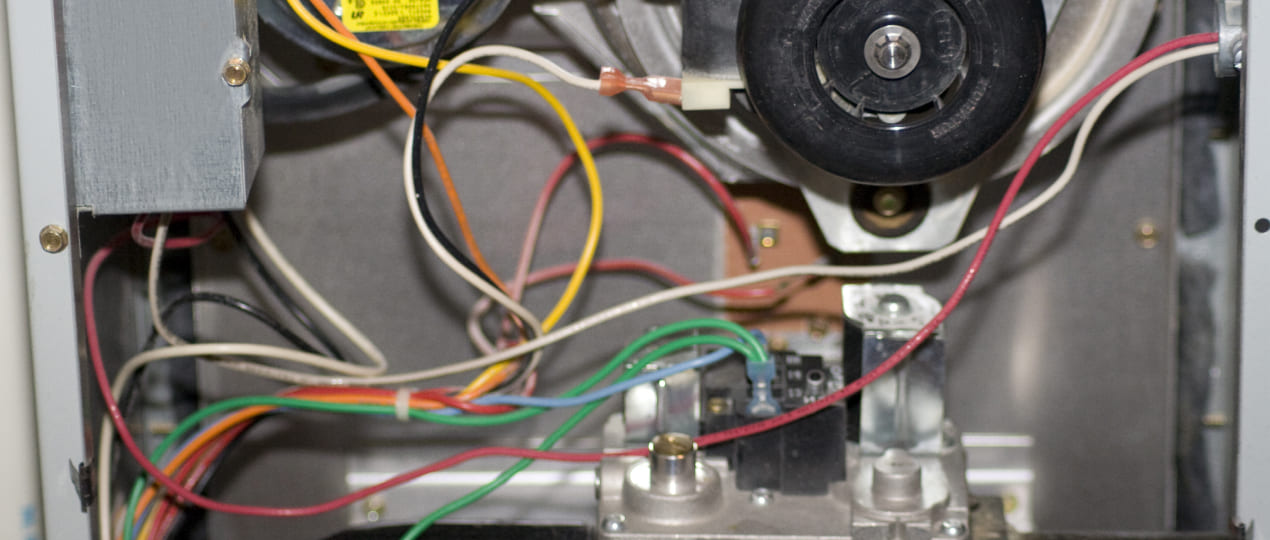
Sustaining a salubrious indoor atmosphere commences with observing the magnitude of your climate control system. In this exhaustive article, we delve into the indispensable procedures for preserving, supplanting, and installing air filters, thereby warranting that HVAC mechanism functions at its optimum performance.
This endeavor transcends merely extending the endurance of apparatus; it likewise fortifies prosperity by mitigating airborne pollutants and allergens. Regularity in how often to change air filter in home is a touchy aspect of supervision that many people overlook. This article provides detailed insights, piecemeal instructions, and skilled advice to aid you establish how often should you replace home air filter and the indicators that signal a need for a substitute.
Why is proper air filter maintenance major?
Meticulous upkeep is paramount to sustaining the efficacy of your HVAC apparatus and to warranting that the ambient air within the domicile remains pristine and devoid of noxious impurities. Gradually, particulate matter such as dust, pollen, and various airborne detritus congregate, impeding the natural airflow and compelling the system to labor excessively. This strain not only curtails energy readiness but may, moreover, precipitate potential operational breakdowns.
Regular home air filter replacement is a proactive measure that protects belongings and forces a healthier indoor environment. In fact, individuals oftentimes ask about the frequency as a way to figure out the peak schedule for upkeep. This careful attention to upkeep is a fundamental aspect of care that delivers long-term benefits.
In addition to boosting energy capability, proper perpetuation can dramatically advance air. The accumulation of debris can exacerbate respiratory points and allergies, making it imperative to monitor factors regularly.
By dedicating effort to regular purification and prompt substitution, you foster a more secure and inviting living environment. This assistance concurrently diminishes the likelihood of exorbitant repair expenses while prolonging the operational lastingness of HVAC apparatus. Bear in mind, it is an unpretentious yet potent stratagem to safeguard both protection and fiscal investment.
The role of air filters in indoor air quality
Air filters serve as an indispensable linchpin in safeguarding the purity of indoor air by ensnaring deleterious contaminants, immunogenic allergens, and minuscule particulate matter. A meticulously sustained appliance warrants that noxious substances are efficaciously expunged from the atmosphere, thereby bestowing a more salubrious and pristine respiratory milieu for all inhabitants.
Homeowners frequently inquire, how often do you change home air filter, in pursuit of achieving desirable outcomes. Meticulous cleansing and timely substitution are indispensable practices that thwart the dispersion of deleterious contaminants, mitigate allergic manifestations, and elevate overall health.
When the filter remains in impeccable condition, it undergirds a resilient HVAC system, thereby augmenting energy efficacy and prolonging the apparatus’s lifespan. Consequently, discerning the necessity for periodic evaluations and scrupulous upkeep is imperative for every domicile.
How a clogged filter affects HVAC efficiency
An obstructed air filter curtails the free passage of air, compelling HVAC systems to operate beyond their normal capacity, which in turn results in escalated energy expenditure and diminished adaptability. As particulate matter accumulates, it hampers the unit’s intended functionality, ultimately exposing it to the risk of overheating and potential mechanical failures.
Homeowners must ask themselves, how often should i change air filter in home, to forestall these arguments? An obstructed one can cause uneven cooling or heating. Constant scrutiny and upkeep are key to avoiding these pitfalls. By adhering to a strict supply schedule, you assure that your system runs uncomplicatedly, diminishing wear and tear and upholding matchless indoor comfort.
How often should you change air filter in home?
Determining the frequency for changing device depends on definite considerations, comprising the type, household occupancy, and environmental conditions. Many experts suggest routine checkup every month and reinstatement every three months; however, those with pets or high dust levels may require more frequent changes.
Homeowners repeatedly question to keep their systems running nicely. Monitoring usage and environmental aspects will aid tailor a schedule that best suits your needs, making sure a consistent supply of clean air and profitable HVAC operation.
Multiple cues may indicate that a replacement is warranted. For instance, conspicuous dust buildup, diminished air circulation, or a discernible alteration in the indoor atmosphere serve as unmistakable signals. Moreover, if apparatus emits aberrant sounds or energy expenditures have escalated, these factors might presage early stages of congestion.
Periodic evaluations and strict adherence to prescribed supervision schedules are imperative for sustaining the system’s efficacy and overall welfare. Bear in mind, this decision is best determined by a vigilant appraisal of system’s operational nuances and the prevailing environmental conditions.
Step-by-step guide to changing a home air filter

Changing is a straightforward task that significantly refines quality. We present detailed graduate advice that will aid you perform a safe and effective substitute. Superior HVAC Service recommends this method to confirm that every component of system receives proper attention.
Follow the instructions anxiously, and refer to the list below for fundamental steps to achieve flawless performance. Remember, how often should you change your air filter at home is closely linked to standardized preservation and prompt action when problems arise. Embarking on the process of reinstating filter requires careful preparation and a clear comprehension of the necessary tools and techniques.
Step-by-step actions to verify a valuable and safe change with precision include:
- Gather the necessary tools Gather all imperative items before beginning the reinstatement process. You should collect a new air filter, a vacuum or brush for cleaning, gloves for protection, and a checklist to warrant every tool is available and in proper working condition.
- Locate and remove the old filter Identify the location of the existing air filter, which is typically found near the HVAC unit. Gingerly remove the frame and extract the old one, confirming to note its orientation for proper installation later.
- Install a new air filter properly Position the new air filter into the designated slot, matching the airflow direction indicated on the frame. Secure the filter firmly and double-check that all edges are sealed, verifying the greatest performance and energy ability.
In summary, following this structured approach not only guarantees a smooth transition but likewise promotes better indoor air quality and system capability. Adhering to these detailed steps will safeguard HVAC system and upkeep a healthier living environment overall, guaranteeing lasting, reliable performance indeed.
Installing a new air filter in different HVAC systems
Installing a new air filter in various HVAC systems requires careful attention to specific design features and installation procedures. Whether you have a central unit, window air conditioner, or portable system, following the correct installation protocol is vital. Superior HVAC Service emphasizes that understanding manufacturer instructions is momentous for peerless performance.
You will get a clear understanding tailored to different systems, making certain that reinstatement is executed safely and effectively. This proactive approach not only renews energy efficiency but further extends the overall life of HVAC equipment.
The following comprehensive steps will assist you in executing a precise and effective installation across multiple air conditioning environments to achieve the most advantageous long-term performance consistently.
How do we provide a process:
- How to install a filter in a central HVAC system We begin by locating the central HVAC system’s compartment. Then, open the access panel precisely, remove the outdated appliance, and inspect the compartment. Insert the new filter following the manufacturer’s protocols for proper airflow orientation.
- Replacing filters in window and portable AC units For window and portable AC units, we locate the slot typically positioned at the front or side. Remove the cover cautiously, extract the worn one, and take over it with a new one, ensuring secure fitting and proper sealing.
- Special considerations for furnace filters When addressing furnace filters, we take extra caution due to their placement within complex systems. Turn off the furnace, remove the old appliance with care, and install the new filter while following safety precautions and manufacturer instructions.
Overall, this guide certifies that installation across diverse HVAC systems is performed with precision and care. Following proper installation techniques is indispensable for both operational safety and long-term performance stability, ensuring reliable future operation.
Conclusion
Steady supervision and timely replacement are critical to preserving the expertise of HVAC systems and maintaining excellent air. By understanding the key factors and indicators, you can make informed decisions about substitutes.
Consistent reinstatement is a proactive measure that saves energy, reduces repair costs, and enhances overall comfort. Remember that following knowledgeable guidance, such as from Superior HVAC Service, can aid you determine the question and solve it effectively. Embrace these practices for a healthier, more powerful environment.
REFERENCES
1. Howard-Reed, C., Wallace, L. A., & Emmerich, S. J. (2003). Effect of ventilation systems and air filters on decay rates of particles produced by indoor sources in an occupied townhouse. Atmospheric Environment, 37(38), 5295-5306. https://www.sciencedirect.com/science/article/abs/pii/S1352231003007532
2. Möritz, M., Peters, H., Nipko, B., & Rüden, H. (2001). Capability of air filters to retain airborne bacteria and molds in heating, ventilating and air-conditioning (HVAC) systems. International journal of hygiene and environmental health, 203(5-6), 401-409. https://www.sciencedirect.com/science/article/abs/pii/S1438463904700528



